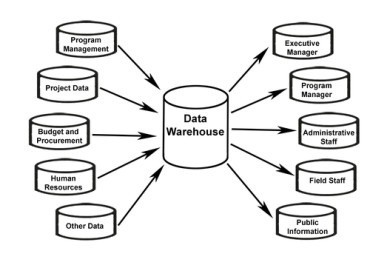
Combining intelligent video systems with AI to analyze and react in real-time lets companies automate and optimize workflows to increase business efficiency.
By 2025, millennials will comprise three-quarters of the global workforce, so it’s of no surprise that the younger generation’s impact is widely discussed. While much has been said on their preferences for beer and kombucha on-tap, there are much more significant contributions to consider. Millennials are digital natives and advocates for new styles of working, leading to wide-reaching changes in workplace design and technology adoption.
See also: Recruitment Chatbots Better Engage Today’s Workforce
The scattered enterprise
The reality of the modern enterprise is that it has become more complicated to define. The implications of global commerce and the emergence of remote work culture, largely driven by younger employees, have created enterprises without walls. According to recent data, approximately 62 percent of U.S. employees work remotely at least part of the time, and 80 percent of 16-24 year-old workers say remote work is permitted at their company. This leads to a culture where, more so than ever before, employees are expected to collaborate with colleagues not based in their office.
To make this type of collaboration effective, traditional meeting conventions are changing. For instance, there is a growing crossover of consumer technology into the enterprise. Consumer communication platforms like FaceTime and WhatsApp have generated rapid acceptance and enthusiasm for everyday video communication. More than 40 percent of millennials prefer to use FaceTime over traditional voice calls. This coupled with advances in enterprise video collaboration technology, including cameras with a 180-degree field of view, to create a truly immersive experience.
With these new video collaboration systems, companies can host all-inclusive meetings in much smaller spaces, designated “huddle rooms,” without excluding anyone who would otherwise be out of view. Concurrent with the growth of open office designs, huddle rooms provide an efficient place while requiring minimal space and infrastructure. The trend of utilizing huddle rooms for meetings coincides with major advances in collaboration technology and artificial intelligence, leading Frost & Sullivan to estimate that huddle rooms will host up to 70 percent of all video conferencing meetings by 2022.
AI uncovers efficiency opportunities
While embracing video collaboration provides immediate productivity value, the underlying technology can deliver far greater benefits. Combining intelligent video systems with cloud AI and locally-based edge AI, organizations can build massive big data lakes that they can analyze and react to in real-time. This data allows companies to automate and optimize workflows to increase business efficiency, thereby multiplying the technologies’ ROI.
The newest camera systems make it much easier for AI algorithms to accurately monitor and analyze video information that results in usable data. For example, companies can automate workflows through anonymous people-counting technology. By knowing how many people are present, a business can create software control signals that enable systems to automate room reservation and release, or autonomously turn off power-consuming equipment when not needed.
The Wall Street Journal reported on a study in which 40 percent of employees said they waste 30 minutes per day looking for meeting spaces, and Gartner has estimated that employees spend 27 hours per year looking for spaces to meet. With so much potential to regain this lost time, self-improving collaboration tools offer enormous value for worker productivity and operational efficiency.
With anonymized people data, businesses can analyze patterns of corporate real estate use and determine real ROI on huddle room investments. Previously sparse, this concrete usage information offers CIOs new ways to make data-based decisions that provide immediate benefits at a time of rising real estate costs. Looking beyond huddle rooms, office spaces with hot-desking designs can determine the load factor across each day, week, and season, and then react to patterns and trends in order to maximize efficiency.
2030 poised for a new workplace norm
While only 28 percent of millennials are now in managerial-level roles, two-thirds intend to hold a leadership position within the next ten years as more senior stakeholders age out of the workforce. With their rise in power, we can expect the evolution of the workplace to accelerate. It’s not crazy to assert that in the not so distant future, remote collaboration could be more pervasive and yield stronger productivity benefits than in-person collaboration. Furthermore, as the aforementioned technologies evolve and become ubiquitous in enterprise environments, we will undoubtedly become more effective at harnessing their endless streams of big data, uncovering even greater benefits.




























